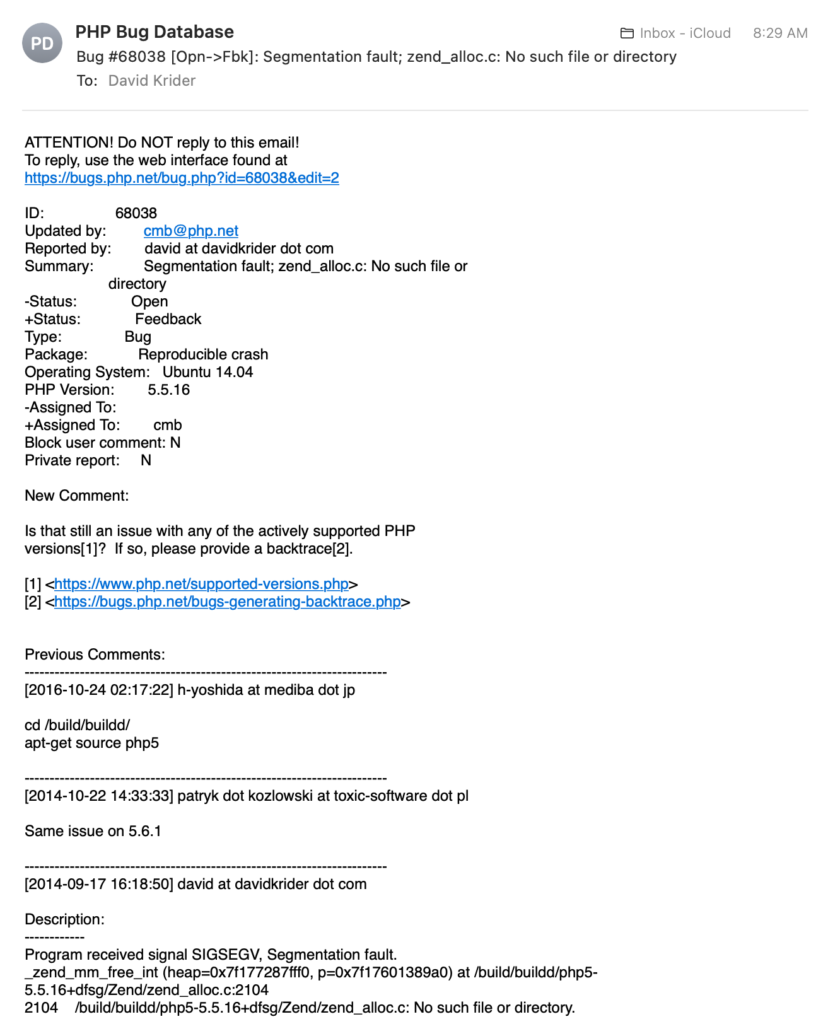I took a few stupid years trying to be the CEO of a growing company during which I didn’t have time to code, and when I came back to web programming, after a break of about 10 years, I found Node, React, and other goodies, which are, don’t get me wrong, amazing? Really really great? But I also found that it took approximately the same amount of work to make a CRUD web app as it always has, and that there were some things (like handing a file upload, or centering) that were, shockingly, still just as randomly difficult as they were in VBScript twenty years ago.
Source: Kinda a big announcement – Joel on Software
It’s hard for me to express just how deeply wrong I find this to be, but I suppose that’s because I take it as an almost personal insult. Here’s a smart, driven guy who probably just became a (near) billionaire with the sale of a site devoted to programming Q&A, and yet, in my opinion, he’s completely out of touch with modern web development. I really resent this gaping hole in the collective knowledge of programmers on this planet.
I’ve been using Rails for 15 years now. I’ve used it to make dozens of applications. It is perfectly suited for making CRUD web apps. It was designed from the ground up to do so, and avoid the grunt work of other programming stacks, specifically Java. Unfortunately, Spolsky is not alone of his ignorance about it. I see lots of programmers singing the praises of Javascript, who dismiss Rails, usually because of its convention-over-configuration approach, but nothing can compare to the productivity of using Rails to write a CRUD web application. Nothing. It’s not even close. He’s absolutely right that Node and React offer no advantage over any other legacy option like Java or .NET. I went down the whole Java/Spring/Angular hole for one ill-fated project, and it’s a freakish, byzantine nightmare. The difference between the two stacks is so stark that I have to assume that people who make these kind of comments are completely oblivious to the fact that Rails exists at all.
Take file uploads for instance. Rails has had easily-configured and power capability from several hugely popular gems since (at least) the 3.x days. The stack has had its own implementation since 5.x. Either way, just configure a couple of lines in an initializer, pick a provider, enter your bucket name and API key, and then it’s literally just a few lines of code to add a file attachment to your model.
Spolsky continues to rant:
The biggest problem is that developers of programming tools love to add things and hate to take things away. So things get harder and harder and more and more complex because there are more and more ways to do the same thing, each has pros and cons, and you are likely to spend as much time just figuring out which “rich text editor” to use as you are to implement it.
This is the continuing, enduring beauty of Rails. They continue to add things to the stack, like file uploads, but they do so in a way that makes them optional. If you want them, it’s, like, 3 lines of configuration, and you’re rolling. A rich text editor, as it turns out, is another perfect example. There has been a popular gem to provide the WordPress editor for a long time now, but Rails started shipping a native rich text editor in 6.x, if you want it. I’m using it in a significant way in a production application right now. I added it well after the site was launched, but it was easy, and it’s terrific.
Today we’re pleased to announce that Stack Overflow is joining Prosus. Prosus is an investment and holding company, which means that the most important part of this announcement is that Stack Overflow will continue to operate independently, with the exact same team in place that has been operating it, according to the exact same plan and the exact same business practices. Don’t expect to see major changes or awkward “synergies”. The business of Stack Overflow will continue to focus on Reach and Relevance, and Stack Overflow for Teams. The entire company is staying in place: we just have different owners now.
This is where I get worried. An investment and holding company paying $1.8B to buy a site like Stack Overflow is going to want to recoup its investment, and make more money in the future. In the old days, they used to say that investments needed to start making money in 7 years. I’m not clear that this old rule of thumb still applies, and SO is a private company, so we can’t see a balance sheet, but does anyone think that “SO for Teams” is making $250M a year? Big M&A announcements like this always say the same things about keeping the product the same. Let’s revisit this in a year, and see where we really stand.





